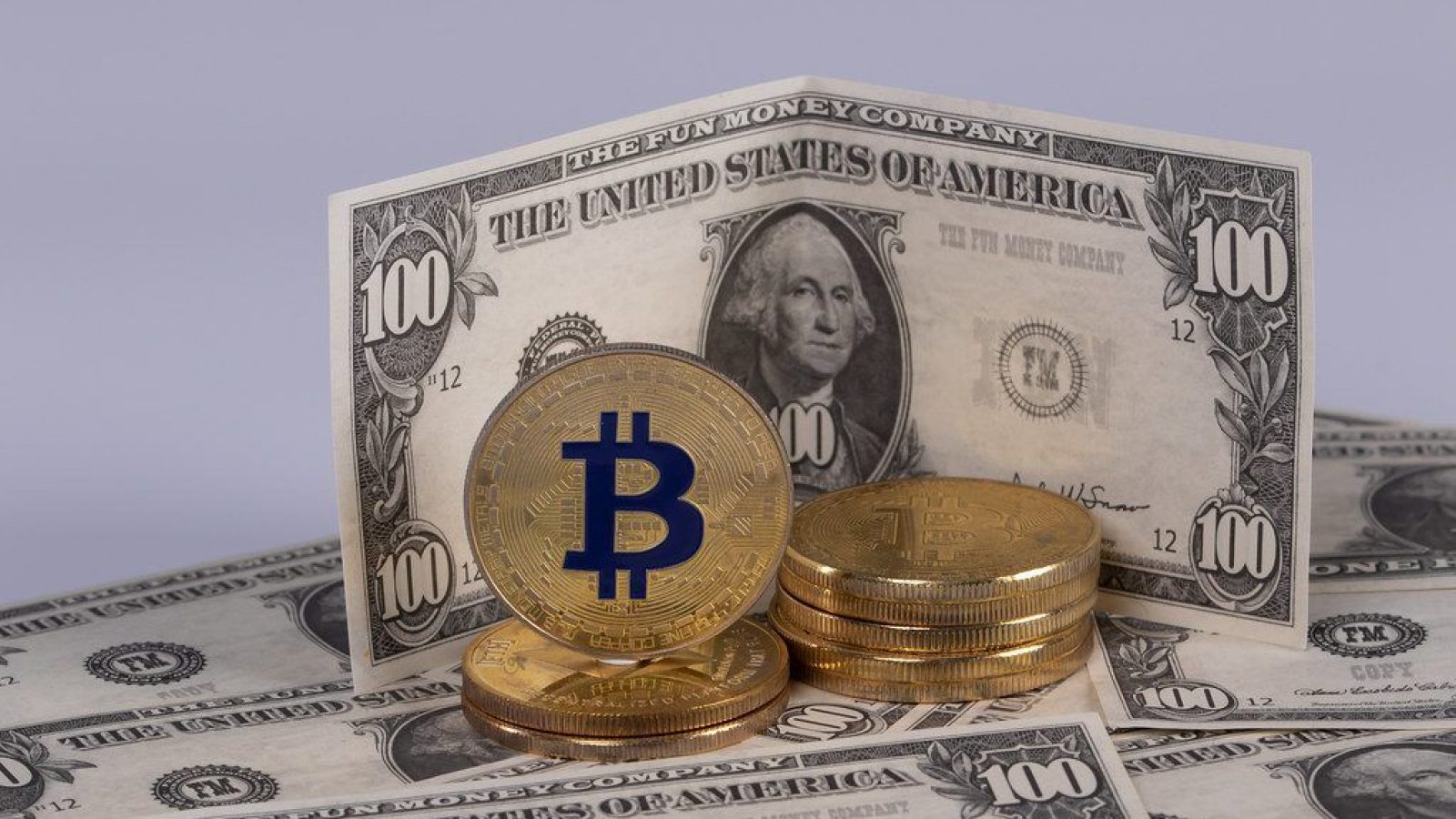A blockchain developer claims to have reverse-engineered the source code of Brazil’s pilot central bank digital currency (CBDC).
Pedro Magalhães said he discovered the existence of functions that allow a “central authority” to freeze funds or reduce balances.
Can we say ‘conspiracy theorists’ take another victory lap?
There have been numerous warnings that a CBDC could perform these functions and create a digital-financial slave state.
It appears we have confirmation CBDCs will possess these abilities.
https://twitter.com/backtolife_2023/status/1679755231742009344
Cointelegraph reports:
On July 6, the source code of the digital Brazilian real pilot project was posted on GitHub portal by Brazil’s central bank. It was explained at the time that the pilot project is intended for use only in a test environment and that the “presented architecture” may be subject to additional changes.
ADVERTISEMENTPedro Magalhães — a blockchain developer and founder of tech consulting firm Iora Labs — later that day claimed to have been able to “reverse engineer” the open source code of Banco Central do Brazil’s digital real, revealing functions in the code.
The functions included freezing and unfreezing accounts, increasing and decreasing balances, moving currency from one address to another, and creating or burning digital real from a specific address.
Magalhães told Cointelegraph that Brazil’s central bank would “probably” maintain these functions for secured loans and other financial operations based on decentralized finance (DeFi) protocols.
Portal do Bitcoin journalist Vini Barbosa broke down the findings in this Twitter thread:
2/ *this report was originally posted on Portal do Bitcoin (in Portuguese-BR).
→ https://t.co/igel68LzP4Central Bank confirms discoveries made by a developer in the source code, but does not say whether functions will be kept in the final version.
— Vini Barbosa (@vinibarbosabr) July 10, 2023
4/ This audit entered the radar of a number of developers, who began to analyse the code. Finding out about a few unknown code functions.
These functions allow the controllers to make several (and relevant) changes in the data of the CBDC’s ledger, direct affecting its users.
— Vini Barbosa (@vinibarbosabr) July 10, 2023
6/ These resources can be executed by any entity that receives proper permissions from the controlling entity of the new system — i.e. the Central Bank.
Among the changes authorities could potentially make using these functions are, for example: pic.twitter.com/AT5v1rOQbK
— Vini Barbosa (@vinibarbosabr) July 10, 2023
8/ Asked by the report, the Central Bank itself also admitted the possibility of executing the functions discovered by Magalhães. pic.twitter.com/JvuhyiKLbh
— Vini Barbosa (@vinibarbosabr) July 10, 2023
10/ In the documentation shared last week, the responsible authority states that the Real Digital pilot project is intended for use only in a test environment and should not be reproduced for real operations.
— Vini Barbosa (@vinibarbosabr) July 10, 2023
12/ “Recently, I delved into the world of ABIs (interfaces) of Real Digital, a Central Bank’s initiative, with the intention of exploring possible vulnerabilities for purely didactic purposes”, says Magalhães.
— Vini Barbosa (@vinibarbosabr) July 10, 2023
14/ In a conversation with myself at Portal do Bitcoin, Pedro Magalhães explained that an Application Binary Interface (ABI) is “basically a way to interact with smart contracts on Ethereum. It is like a manual that tells how the contract can be read and written.”
— Vini Barbosa (@vinibarbosabr) July 10, 2023
16/ Based on this analysis, Pedro says it was possible to recreate the smart contract in Solidity (the computing language) used in the pilot project. This contract enables the execution of the following functions ↓ pic.twitter.com/VhKLDFAJdH
— Vini Barbosa (@vinibarbosabr) July 10, 2023
18/ 💬“What most people are going to use on a day-to-day basis is the ERC20-based smart contract to transfer value.”
ERC20 is the Ethereum (ETH) network token standard, very common in the cryptocurrency market and in the decentralized finance (DeFi) ecosystem.
— Vini Barbosa (@vinibarbosabr) July 10, 2023
20/ There is a follow up to this story ↓ https://t.co/orZfcB0TPC
— Vini Barbosa (@vinibarbosabr) July 14, 2023
“The Central Bank of Brazil confirmed that it plans to maintain in the Real Digital code the functions that allow the monetary authority and authorized entities to freeze user accounts , decrease target address balances, confiscate and mint new units of the digital currency,” Barbosa writes in Portal do Bitcoin.
“The confirmation was made by the monetary authority on Tuesday (11) after questioning by Portal do Bitcoin . According to the Central Bank, the functions will be maintained due to the need to adjust the platform to Brazilian legislation and justice,” he adds.
The Brazilian central bank reportedly provided this statement:
“According to Brazilian legislation, the courts, in the proper conduct of legal proceedings, have the prerogative to freeze or arrest amounts held in the SFN. These functionalities, therefore, currently exist in the SFN and must be reproduced on the Real Digital platform in order to guarantee its compatibility with the legislation in force.”
⚠️🇧🇷 CONFIRMED!
The Central Bank of Brazil will be able to freeze accounts and *arrest values* even in the final version of #RealDigital (Brazilian #CBDC).
*full report (in pt-br): https://t.co/RUUS41Yivt
**follow up on the story brought in my last thread …+The Central Bank… pic.twitter.com/f306HijbeC
— Vini Barbosa (@vinibarbosabr) July 13, 2023
Portal do Bitcoin reports:
SFN is the National Financial System, also composed of the Brazilian Payment System (SPB) and Pix. This ability to “freeze or arrest amounts” held in this System is protected by current legislation in Brazil, according to the Central Bank.
The information was already known to members participating in the Real Digital Forum , according to information from the agency.
“The functionalities of freezing assets and changing portfolio balances on the Real Digital platform were announced in a technical presentation made during the 1st Plenary of the Real Digital Forum held on June 26, specifically with regard to Real Digital and Real Tokenized.”
– Brazilian central bank
“Until now, there was no confirmation of its application in the final version of the Brazilian CBDC – one possibility is that these functions were only implemented within the test environment of the pilot project,” Barbosa adds.
Blockchain developer Pedro Magalhães claims that he has successfully reverse-engineered the source code of Brazil’s pilot central bank digital currency (CBDC).
He revealed the existence of functions that empower a central authority to freeze funds or reduce balances. pic.twitter.com/J34wgBJW5o
— Wall Street Mav (@WallStreetMav) July 13, 2023
Strangely, Magalhães suggested there could be potential benefits to CBDCs in a recent post.
“However, in a recent post on July 10, Magalhães suggested that despite the apprehension surrounding Brazil’s CBDC, there could be potential benefits. He argued that a digital currency would enhance the traceability of taxes, enabling the public to scrutinize the allocation of tax funds and monitor the government’s on-chain purchases, thereby increasing transparency in parliamentary amendments,” crypto.news reports.
crypto.news provided further information about Brazil’s journey towards a CBDC:
The Central Bank of Brazil first unveiled the participants for the Real Digital Pilot on May 24, with an overwhelming response of 36 proposals from over 100 institutions representing diverse financial sectors.
ADVERTISEMENTAmong the 14 chosen parties were Visa, Mastercard, Itaú Unibanco, BTG Pactual, and other Brazilian banking institutions.
The CBDC initiative, known as the digital real, aims to be pegged to the national fiat currency, the real, with a fixed supply that will gradually increase over time.
Fabio Araujo, the project coordinator for Brazil’s CBDC initiative, has set a goal for widespread adoption of the digital real among the general population by the end of 2024.
The discovery in Brazil should be a warning for what’s down the pipe in the United States.
The Federal Reserve is getting ready to launch its FedNow program, which will be a precursor to a CBDC.
Read more about FedNow in our prior reporting:




Join the conversation!
Please share your thoughts about this article below. We value your opinions, and would love to see you add to the discussion!